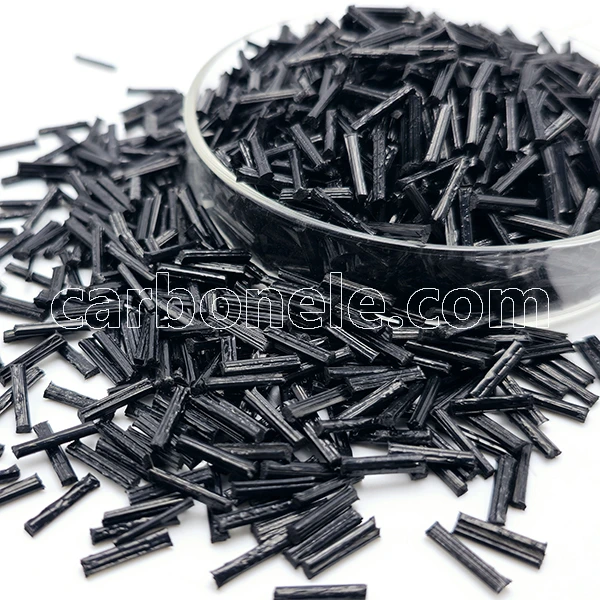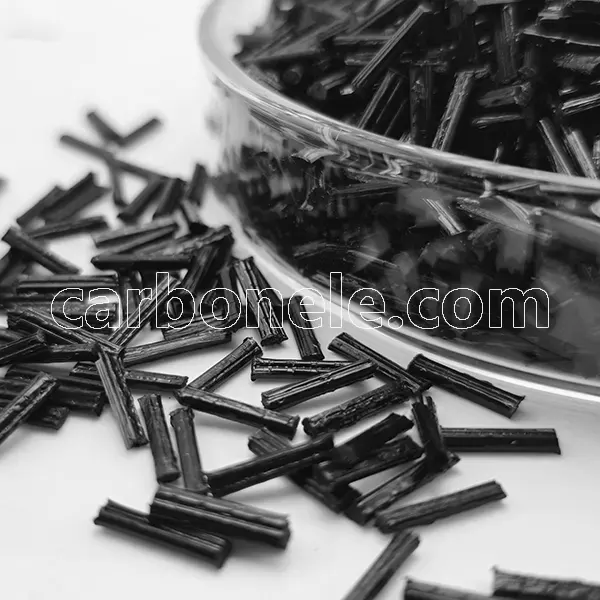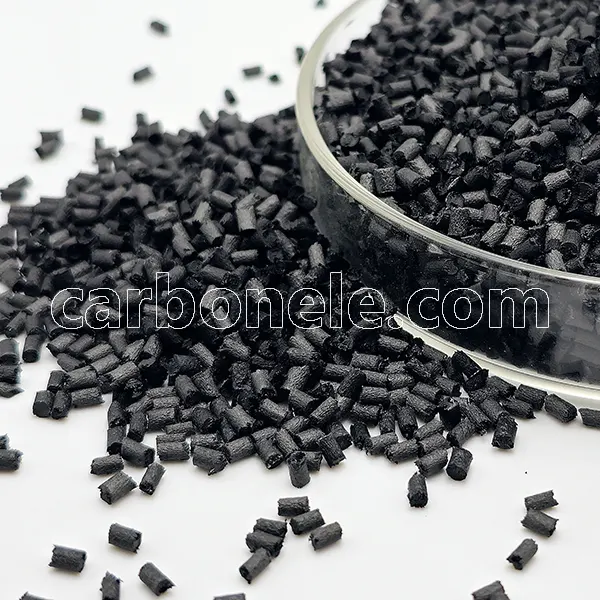Different Between PPS-CF10 And PA6-CF10 - Carbon Fiber Compounds Manufacturer | Supplier
PA66-CF10 and PA66-LCF10 are both nylon 66 materials reinforced with 10% carbon fiber, but they differ in fiber type. PA66-CF10 contains short carbon fibers, offering good strength, stiffness, and ease of molding. PA66-LCF10 uses long carbon fibers, providing higher mechanical strength, better impact and fatigue resistance, and improved dimensional stability. However, it requires more advanced processing and typically has a rougher surface. PA66-CF10 is better for general applications, while PA66-LCF10 suits high-performance, load bearing parts.
In Depth Comparison of PPS-CF10 and PA6-CF10: Material Behavior, Performance, and Application Considerations
Polyphenylene Sulfide (PPS) and Polyamide 6 (PA6) are both high performance thermoplastics widely used in engineering applications. While PA6 is known for its flexibility, toughness, and ease of processing, PPS is valued for its superior thermal stability, chemical resistance, and dimensional accuracy.
To enhance mechanical performance, both materials are often reinforced with 10% carbon fiber, resulting in PPS-CF10 and PA6-CF10. Though the carbon fiber content is the same, the base polymer fundamentally changes their behavior, performance, and suitable applications.
This article presents a detailed comparison of PPS-CF10 and PA6-CF10 in terms of mechanical properties, processing, thermal resistance, and cost performance balance.
1. What Are PPS-CF10 and PA6-CF10?
PPS-CF10: A high performance thermoplastic matrix made of PPS reinforced with 10% short carbon fiber by weight.
PA6-CF10: A modified Polyamide 6 material, also reinforced with 10% short carbon fiber.
While both use chopped carbon fiber to increase strength and stiffness, the polymer matrix behavior dictates how the composite performs in terms of temperature resistance, chemical exposure, and long term dimensional stability.
2. Key Property Comparison
| Property | PA6-CF10 | PPS-CF10 |
|---|---|---|
| Matrix Type | Polyamide 6 (semi crystalline) | Polyphenylene Sulfide (semi-crystalline) |
| Thermal Resistance | Up to ~120–140°C (limited by moisture) | Excellent; can exceed 240–260°C continuously |
| Carbon Fiber Content | 10% | 10% |
| Tensile Strength | Good (30–50% improvement over PA6) | Higher, especially at elevated temperatures |
| Modulus (Stiffness) | Moderate to high | Very high |
| Impact Strength | Good | Moderate to low |
| Dimensional Stability | Sensitive to humidity, limited in high heat | Outstanding; very low creep and thermal expansion |
| Chemical Resistance | Limited in acids/bases and moisture | Excellent in aggressive environments |
| Flame Resistance | Requires additives | Naturally flame resistant (UL94 V-0 possible) |
| Moisture Absorption | High (~2–3%) | Very low (<0.05%) |
3. Mechanical Performance Insights
PA6-CF10 performs well under mechanical loads at room temperature but loses strength and stiffness when exposed to heat or humidity due to moisture absorption.
PPS-CF10, on the other hand, maintains mechanical integrity even at elevated temperatures and offers superior chemical resistance. Its stiffness and creep resistance make it suitable for applications requiring tight tolerances over long term use.
4. Processing and Manufacturing Differences
| Processing Feature | PA6-CF10 | PPS-CF10 |
|---|---|---|
| Mold Temperature | ~80–100°C | 130–160°C |
| Melt Temperature | ~260–280°C | ~300–320°C |
| Processing Complexity | Easy to mold | Requires high temp tools and precision |
| Drying Requirements | Must be dried thoroughly | Low moisture absorption, drying optional |
| Tool Wear (due to CF) | Moderate | High – PPS is abrasive |
Note: PPS requires high temperature resistant molds and precise temperature control during processing. It is also more abrasive to tooling due to both the polymer and fiber.
5. Surface Finish and Aesthetic Considerations
PA6-CF10 usually results in a smoother surface finish, especially when well processed.
PPS-CF10 may lead to matte or slightly rougher surfaces, but surface finish is not typically a concern in its industrial applications.
6. Application Suitability
PA6-CF10 is commonly used for:
Automotive interior brackets
Consumer electronics housings
Power tool enclosures
Light-duty structural parts needing moderate strength and cost efficiency
PPS-CF10 is ideal for:
Automotive under the hood components (e.g., sensors, pump housings)
Electrical and electronic parts requiring flame resistance
Chemical processing equipment
Precision parts exposed to high heat, solvents, or mechanical load
7. Cost and Value Considerations
PA6-CF10 is much more cost effective, easier to mold, and readily available—making it the preferred choice for moderate performance applications.
PPS-CF10 comes with a higher material and processing cost but offers superior performance in harsh environments where PA6 would degrade or fail.
8. Summary: Which Should You Choose?
| Design Requirement | Recommended Grade |
|---|---|
| Cost sensitive applications | PA6-CF10 |
| Easy processing and moldability | PA6-CF10 |
| Long term performance in high heat | PPS-CF10 |
| Dimensional stability over time | PPS-CF10 |
| Chemical resistance (e.g., oils, fuels) | PPS-CF10 |
| Lightweight semi structural parts | PA6-CF10 |
| Flame resistant or electrical applications | PPS-CF10 |
9. Conclusion
While both PPS-CF10 and PA6-CF10 are 10% carbon fiber reinforced thermoplastics, they are optimized for very different environments:
PA6-CF10 offers good mechanical performance, aesthetic finish, and low cost for general purpose or moderate temperature use.
PPS-CF10 excels in high temperature, chemically aggressive, or dimensionally critical environments—though at higher material and processing cost.
Choosing between them depends on the specific thermal, chemical, mechanical, and environmental requirements of your application.
If you want to get more information about PA66-CF or PA66-LCF, you can vist our Youtube.
Previous News
Different Between PA66-CF10 and PA66-LCF10Next News
Carbon (Xiamen) New Material Participation in 2...
Feature Product
-
PA12 LCF30 for Drone Fuselages & Wings
What do you know about PA12 LCF30? PA12 ...
-
Competitive Price PA6 LCF30 Composites
What’s it? PA6 LCF30, which stands...
-
ABS CF10 Compound ABS 10%CF Thermoplastic Compo...
What’s ABS CF10? ABS CF10 refers t...








